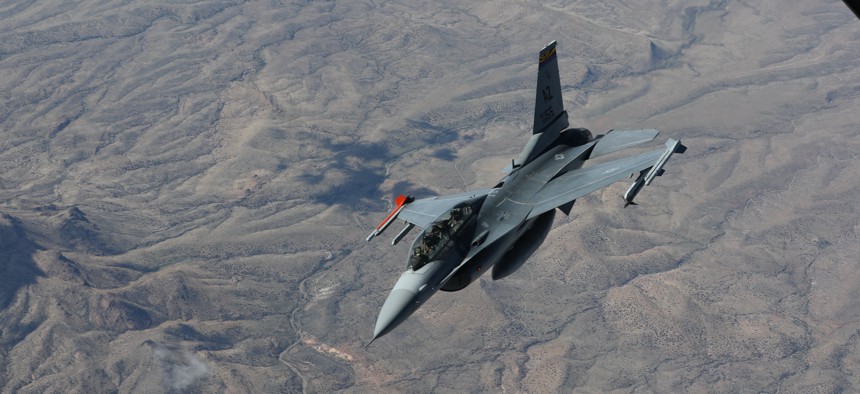
An F-16 assigned to Morris Air National Guard Base in Arizona breaks off after midair refueling. Spc. Anthony Nadeau / U.S. Air Force
First Ukrainian F-16 pilots will complete training as soon as May
Air National Guard director says the effort is taking a bit longer because pilots need to learn a “full range of missions.”
AURORA, Colorado—Ukrainian pilots will start graduating from F-16 fighter jet training in May, the Air National Guard estimates.
The first four pilots are “pretty close” to the end of their training, Air National Guard director Lt. Gen. Michael Loh told reporters Tuesday at the Air & Space Forces Association Warfare Symposium.
The U.S. is training 12 Ukrainian pilots in fiscal 2024—all of whom are set to graduate between May and August, according to Arizona National Guard spokesperson Capt. Erin Hannigan.
But what the pilots do then depends on the broader Ukrainian F-16 effort and when the jets will actually arrive in Ukraine, Loh said. The U.S., which controls the export of the fighter jets, gave allies the green light to transfer F-16s to Ukraine in July.
The training effort started in late October at Morris Air National Guard base in Tucson, Arizona. Denmark is also leading an effort to train Ukrainian pilots on the fighter jet in Europe.
In September, Loh said that it would take anywhere from three months to nine months for Ukrainian pilots to finish F-16 training.
The pilots are already “flying F-16s solo every day,” but the requirements for these pilots have changed and training is taking a bit longer because the pilots need to be able to operate a “full range of missions” beyond wartime scenarios, Loh said.
However, the U.S. won’t be able to keep this effort going and train more pilots beyond the first cohort if Congress doesn’t authorize more funding.
“Training cost is tuition-based and that funding is allocated prior to student arrival. Students currently enrolled are not expected to be impacted by funding issues. If additional pilots are needing to be trained, additional funding will be necessary,” Hannigan said.
